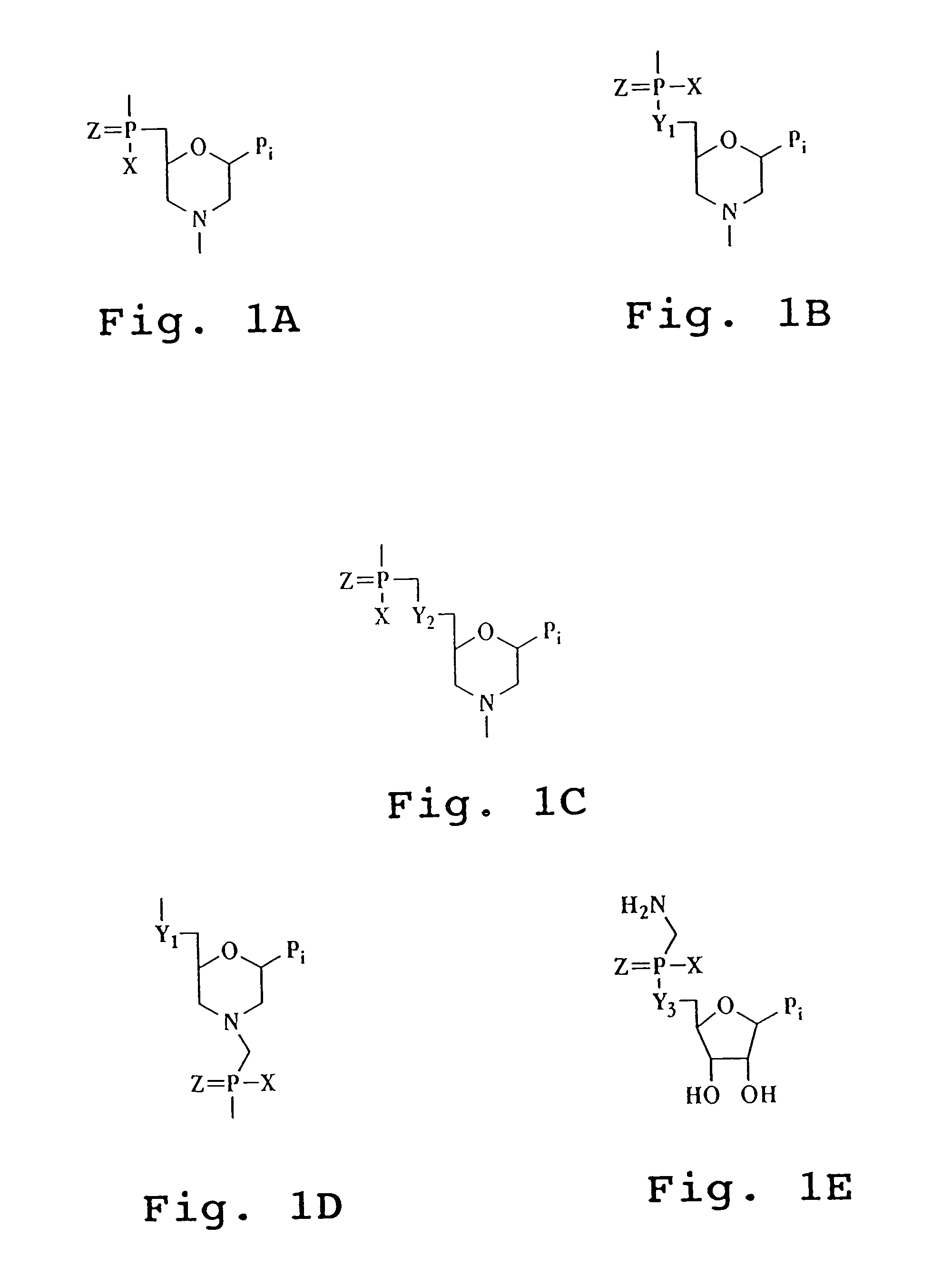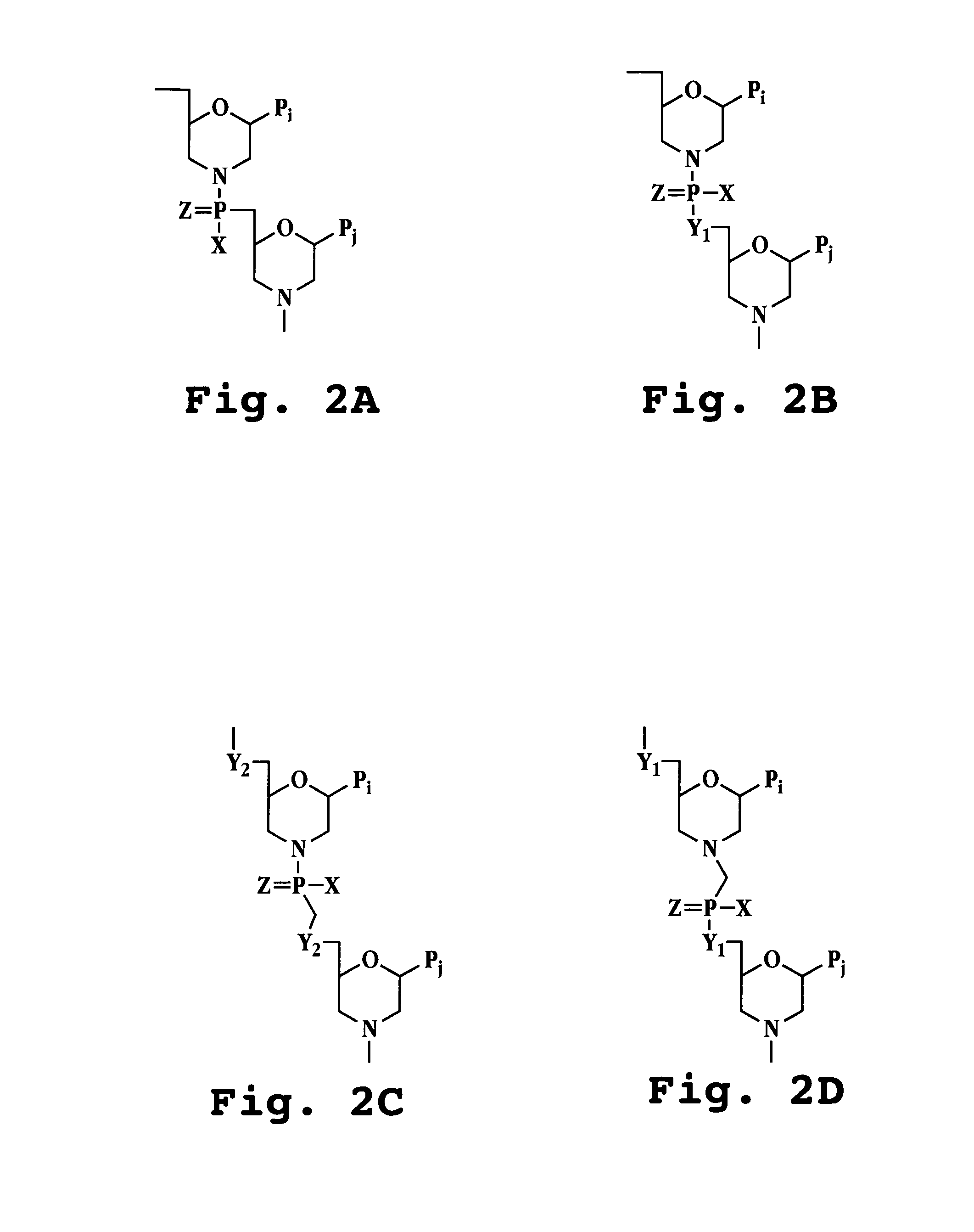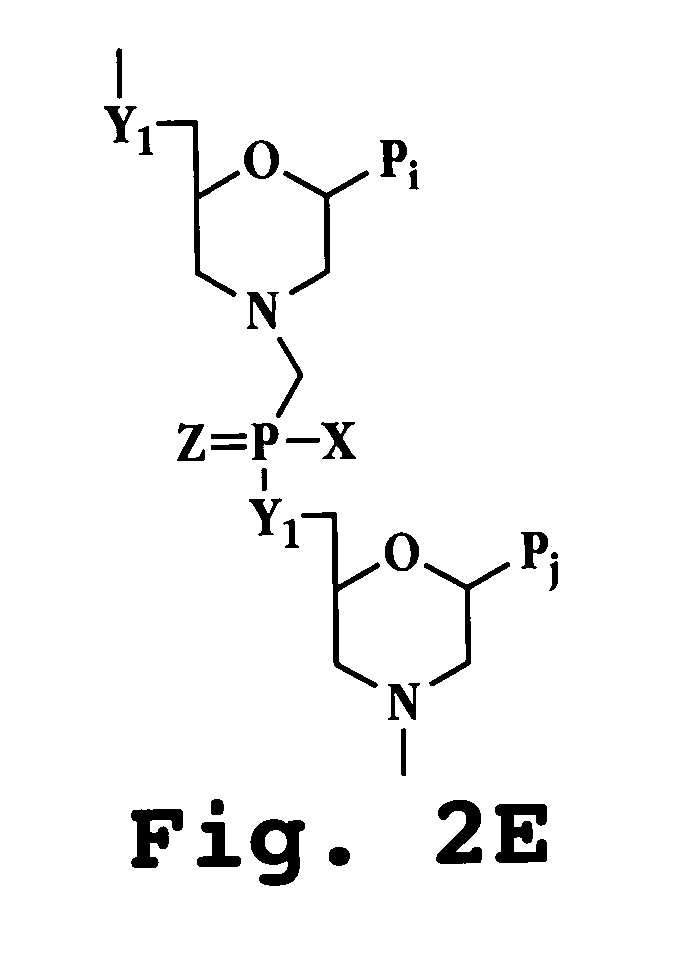Antisense antiviral agent and method for treating ssRNA viral infection
an antiviral agent and antiviral technology, applied in the field of antisense oligomers, can solve the problems of inability to specific treatment regimes for many viral infections, inability to immunize against these virulent viruses, and acute and severe symptoms, and achieve the effect of enhancing the uptake of compound
- Summary
- Abstract
- Description
- Claims
- Application Information
AI Technical Summary
Benefits of technology
Problems solved by technology
Method used
Image
Examples
example 1
Antisense Inhibition of Picornaviridae (Human rhinovirus) in vitro
[0210]The inhibitory effect on rhinovirus 16 of a phosphorodiamidate morpholino oligomer (PMO) having a sequence targeted to the translation initiation zone of rhinovirus 14 was evaluated. The phosphorodiamidate morpholino oligomers (PMO) were synthesized at AVI BioPharma (Corvallis, Oreg.), as described in Summerton and Weller, 1997. Purity of the full-length oligomer was greater than 90% as determined by reverse-phase high-pressure liquid chromatography and MALDI TOF mass spectroscopy. The lyophilized PMOs were dissolved in sterile 0.9% NaCl and filtered through 0.2 μm Acrodisc filters (Gelman Sciences, Ann Arbor, Mich.) prior to use in cell cultures.
[0211]The PMO includes a nucleic acid sequence targeting rhinovirus 14 and containing three mispairs in respect to the rhinovirus 16 target sequence. The target sequence (GenBank NC001752 618-637; SEQ ID NO: 5) and targeting sequence (SEQ ID NO: 18) are as follows:
[0212...
example 2
Antisense Inhibition of Caliciviridae Vesivirus Isolates PCV Pan-1 and SMSV-13 in Porcine Kidney (PK-15) and African Green Monkey Kidney (Vero) Tissue Culture
[0220]The antiviral efficacy of three phosphorodiamidate morpholino oligomers (PMO) targeted to the ORF1 translation initiation zone of the strains Pan-1 and SMSV-13 of the vesivirus genus of Caliciviridae was evaluated. The PMOs were scrape-loaded, as described above, to two host cell lines, Porcine kidney cells (PK-15) (ATCC No. CCL33) and African Green Monkey Kidney cells (ATCC No. CCL81) (Vero), which were subsequently exposed to vesiviruses of the strains Pan-1 and SMSV-13. The protocol of Example 1 was followed for incubation and determination of viral load.
[0221]The three PMOs each included a targeting sequence complementary to the Pan-1 sequence (GenBank accession no. AF091736) spanning the start codon of ORF1. PMOs were used at a concentration of 20 μm in serum free media. A saline blank and scrambled sequence control ...
example 3
Effect of PMO Antisense to Feline Calicivirus
[0227]A feline calicivirus that became a hemorrhagic virus to the cat was isolated and propagated in a cell culture. The cell culture was exposed, following the protocol described in Example 1, to an antisense PMO having the following targeting sequence: CAG AGT TTG AGA CAT TGT CTC (SEQ ID No. 32). A one-log reduction of viral titer was observed in the cell culture.
PUM
| Property | Measurement | Unit |
|---|---|---|
| Tm | aaaaa | aaaaa |
| Tm | aaaaa | aaaaa |
| Tm | aaaaa | aaaaa |
Abstract
Description
Claims
Application Information
 Login to View More
Login to View More - R&D
- Intellectual Property
- Life Sciences
- Materials
- Tech Scout
- Unparalleled Data Quality
- Higher Quality Content
- 60% Fewer Hallucinations
Browse by: Latest US Patents, China's latest patents, Technical Efficacy Thesaurus, Application Domain, Technology Topic, Popular Technical Reports.
© 2025 PatSnap. All rights reserved.Legal|Privacy policy|Modern Slavery Act Transparency Statement|Sitemap|About US| Contact US: help@patsnap.com



